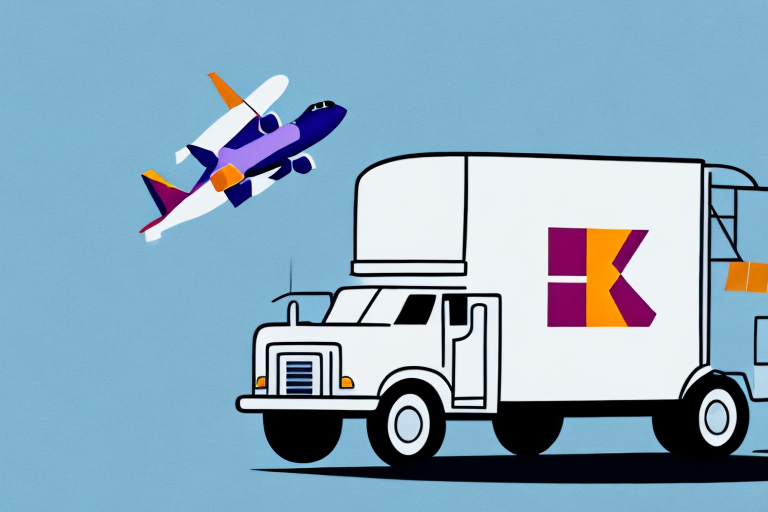Understanding Carriage Value and Its Importance
Carriage value is a critical metric for businesses using FedEx for shipping, as it encompasses the total value of goods transported, including shipping costs, insurance, customs duties, and taxes. Accurately calculating carriage value ensures that businesses minimize expenses and optimize their shipping strategies, leading to better financial performance and customer satisfaction.
What is Carriage Value?
The carriage value represents the comprehensive cost associated with transporting goods via FedEx. This includes:
- Shipping Costs: Fees based on package weight, dimensions, distance, and chosen service level.
- Insurance: Protection against loss, theft, or damage during transit.
- Customs Duties and Taxes: Applicable for international shipments, varying by destination country and goods type.
Why is Carriage Value Important?
Understanding carriage value allows businesses to:
- Determine the true cost of shipping and set accurate product pricing.
- Identify areas to reduce expenses without compromising service quality.
- Negotiate better rates with FedEx by demonstrating shipping volume and needs.
Key Factors Influencing Carriage Value
Several elements can affect the carriage value of a FedEx shipment. Being aware of these factors helps in making informed decisions to control shipping costs.
Package Weight and Size
FedEx calculates shipping costs based on either actual weight or dimensional weight (whichever is greater). Dimensional weight considers the package's length, width, and height, reflecting the space it occupies during transit. Optimizing package dimensions can lead to significant cost savings.
Destination and Origin Points
The distance between the shipment's origin and destination directly impacts shipping costs. International shipments may incur higher fees due to longer transit times and additional customs processes. Utilizing FedEx's shipping calculator can help estimate costs based on specific routes.
Service Level Selected
FedEx offers various service levels, from overnight delivery to ground transportation. Premium services like FedEx Ground are cost-effective for non-urgent shipments, while expedited services cater to time-sensitive deliveries at a higher cost.
Special Handling Requirements
Shipments requiring special handling, such as refrigeration for perishable goods or secure transport for hazardous materials, will incur additional charges. It's essential to assess whether these requirements are necessary for each shipment to avoid unnecessary expenses.
Insurance Coverage
Shipping insurance safeguards against potential losses during transit. FedEx provides various insurance options tailored to different shipment values and risk levels. Selecting appropriate coverage ensures protection without overpaying for unnecessary insurance.
Calculating Carriage Value: A Step-by-Step Guide
Accurately calculating the carriage value involves several steps to ensure all cost components are accounted for.
Step 1: Determine the Weight and Size of Your Package
Accurate measurement of your package's weight and dimensions is crucial. Use a reliable scale and tape measure, ensuring that you account for any packaging materials that contribute to the overall size.
Step 2: Identify Destination and Origin Points
Use FedEx’s shipping calculator to estimate costs based on the specific origin and destination, taking into account any regional surcharges.
Step 3: Select the Appropriate Service Level
Choose a service level that aligns with your delivery timeline and budget. For example, FedEx Ground offers economical rates for standard shipping needs.
Step 4: Calculate Additional Fees
Factor in any special handling requirements or additional services that may apply to your shipment. This includes fees for oversized packages, hazardous materials, or additional insurance coverage.
Step 5: Add Insurance Costs
Determine the level of insurance required based on the shipment’s value. Add the corresponding insurance cost to your total carriage value.
Step 6: Total Carriage Value
Sum all the calculated costs to arrive at the total carriage value of your FedEx shipment. This comprehensive figure ensures that you have accounted for all potential expenses.
Common Mistakes and How to Avoid Them
Avoiding common errors in calculating carriage value can lead to significant cost savings and more efficient shipping operations.
Incorrect Weight and Size Measurements
Inaccurate measurements can lead to overpaying for shipping. Always measure packages precisely and consider using software tools to automate measurements where possible.
Selecting an Unnecessary Service Level
Opting for premium services when not needed can inflate shipping costs. Evaluate the urgency of your shipments to choose the most cost-effective service level.
Overlooking Additional Fees and Taxes
Failing to account for extra charges such as customs duties for international shipments can result in unexpected expenses. Always include these in your carriage value calculations.
Strategies to Reduce Carriage Value
Implementing cost-saving strategies can significantly decrease your shipping expenses without compromising service quality.
Consolidate Your Shipments
Combining multiple shipments into a single package can reduce overall shipping costs by minimizing the number of packages and optimizing space utilization.
Choose Ground Transportation
For non-urgent deliveries, opting for ground transportation instead of expedited services like overnight shipping can lead to substantial savings.
Utilize Shipping Software
Advanced shipping software can automate shipping processes, optimize package sizes, and identify the most cost-effective shipping options, integrating seamlessly with FedEx services.
Negotiating Better Rates with FedEx
Effective negotiation can lead to better shipping rates and more favorable contract terms with FedEx.
Understand the Market
Research current shipping trends and rates to have a solid foundation for negotiations. Being informed about market standards empowers you to negotiate confidently.
Leverage Shipment Consolidation
Demonstrating consistent shipping volumes and the ability to consolidate shipments can make your business more attractive to FedEx, increasing your chances of securing discounted rates.
Consider Long-Term Contracts
Committing to long-term shipping contracts can provide leverage for negotiating lower rates, as it guarantees FedEx a steady stream of business.
Tools and Resources for Accurate Calculation
Utilizing the right tools can streamline the process of calculating carriage value and ensure accuracy.
FedEx Shipping Calculator
FedEx offers a shipping calculator that estimates shipping costs based on package specifics and destination, providing a quick and reliable way to determine carriage value.
Advanced Shipping Software
Comprehensive shipping software solutions integrate with FedEx to automate calculations, manage shipments, and compare rates across different service levels, enhancing efficiency and accuracy.
Understanding the Impact of Taxes on Carriage Value
Taxes, including customs duties for international shipments, can significantly affect the carriage value. Properly managing these costs is essential for maintaining profitability.
Use Incoterms
International Commercial Terms (Incoterms) define the responsibilities of buyers and sellers in global trade. Selecting the appropriate Incoterms can clarify tax obligations and minimize unexpected charges.
Engage a Customs Broker
A customs broker can navigate complex import regulations, ensuring compliance and optimizing tax payments. Utilizing a broker can prevent delays and additional costs associated with customs clearance issues.
Case Study: Reducing Carriage Value by 30% with FedEx
Lori's Luggage, a California-based travel goods business, sought to reduce transportation costs without compromising service quality. By switching to FedEx Ground and consolidating shipments, the company achieved a 30% reduction in carriage value, saving over $10,000 annually. These savings were reinvested into expanding product lines, enhancing customer experience, and driving business growth.
Best Practices for Monitoring Carriage Value
Implementing best practices for tracking and monitoring carriage value ensures ongoing cost efficiency and effective shipping management.
Use FedEx Tracking Tools
FedEx provides robust tracking tools that offer real-time updates on shipment status. Utilizing these tools helps identify potential issues early and allows for timely adjustments to shipping processes.
Regularly Review Transportation Costs
Conducting quarterly or bi-annual reviews of shipping expenses helps identify trends, uncover cost-saving opportunities, and ensure that your shipping strategies remain aligned with business goals.
Conclusion: The Importance of Accurately Calculating Carriage Value
Accurately calculating the carriage value of your FedEx shipments is fundamental to managing transportation costs effectively. By understanding the key factors, avoiding common mistakes, implementing cost-saving strategies, and utilizing the right tools, businesses can optimize their shipping operations, negotiate better rates, and enhance overall profitability. Taking control of carriage value not only improves financial outcomes but also contributes to a more streamlined and efficient supply chain.




















